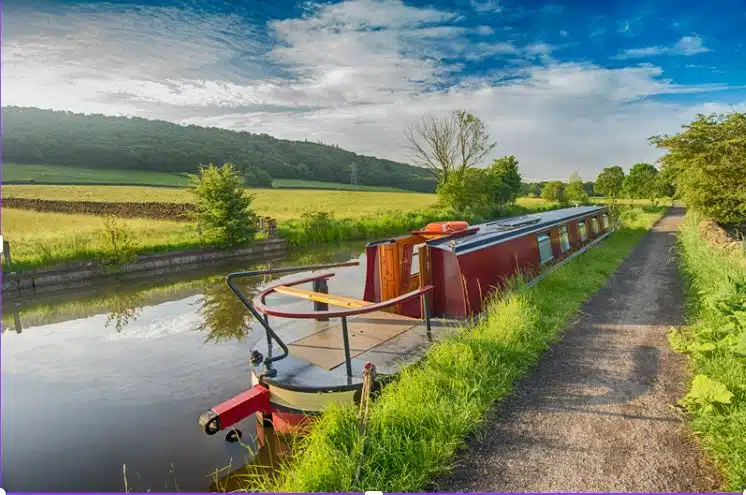Discover the Joys of Narrowboat Living After 50

Have you been thinking about selling up and investing in a narrowboat? It’s a dream for many – one that’s particularly popular among those approaching retirement – and it’s easy to see the appeal.
From getting to see the world from a different perspective to having the opportunity to travel regularly, there are plenty of positives that can come from choosing to live on a narrowboat.
However, there’s a lot to weigh up before you do.
If you’re considering swapping life on land for the canals and waterways across the country, we’ve rounded up some of the key considerations that you might want to make before you take the leap.
Do Some Research On Narrowboats First
The starting point for moving your life to a narrowboat begins with doing some research into life on board.
Take the time to find out as much as you can during this period so that you feel prepared when you do make the move.
First, you’ll need to look into the costs involved. It’s likely that you’re already costing up everything ahead of your retirement.
Whether you’re working out where you stand in terms of your pension or trying to budget for the coming years, you have a lot to think about right now.
If you’re seriously considering selling up and getting a narrowboat, this is an added layer to add to your retirement plans – however, it could potentially make life a lot simpler in the long run.
Before we look at how things can be easier, you’ll need to get the figures in place. Questions to consider include:
- How much does a boat cost?
- What amount do I need to set aside for licences and mooring fees?
- What other investments are needed? For example, does the boat come with a generator already or is this an extra expense?
- Do I have enough funding to afford day-to-day living expenses while on my boat?
The initial cost of a boat can be expensive. It can be as much as three times the amount that you’d put forward as a deposit on a property.
However, there are ways in which you might want to fund it, such as by selling your existing home and using the money from a sale for your boat.
Ahead of taking this step, however, it’s recommended that you try renting a boat for a while. This will give you the chance to get a feel for how it works and help you to decide if you’re ready to make a commitment and buy.
You might also want to take some courses to learn how to handle and maneuver the boat properly before you rent – and eventually buy – so that you feel comfortable on the water.
As well as looking into the initial costs and running costs, it’s important that you know what to expect from life on the canals and waterways.
There are online boating communities, such as the Canal and River Hub and Canal World, that are accessible for people who are yet to take to the water.
Here, you can ask questions and see if your questions have already been answered.
For instance, if you need to know how to wash your clothes, that’s the kind of knowledge that’s ready to be passed on through these resources.
The added benefit of speaking to people who are already living on a narrowboat before you invest in your own is that you get to make connections and potentially form friendships.
Licence and insurance
Boats that operate on the canals and waterways need a licence. This applies whether or not the boat has a motor.
Take the time to ensure that the licence in which you invest is valid for the waterways that you’ll be using. Licences from the Canal & River Trust, for example, are only valid on the Trust’s network, although there are exceptions.
Make sure that you have the right licences in place in order to avoid unnecessary fines.
On a similar level, boat insurance is a commonly taken precaution for those planning to live on the water.
Mooring options
There are different mooring options available for narrowboat and barge owners and there are fees that you’ll need to pay if you do moor your boat.
You’ll need a long-term mooring if you’re not planning on continuously cruising. If you don’t plan on mooring, you’ll still need a long-term boat licence.
There are different options available if you decide to moor your boat. If you’re unsure of where you’ll be mooring, it’s worth seeing what’s available at the moment.
The Canal & River Trust recommends checking out Waterways World and Canal Boat Magazine for inspiration.
Financial considerations
We’ve already touched on some of the financial considerations that you’ll need to make while researching investing in a narrowboat.
Other things to factor in include boat maintenance costs, fuel and repairs.
Downsize your life
You’ll need to work out how to downsize. This is a much smaller space, so you’ll have to decide what can stay and what needs to go.
Be brutal here. If you’re committing to canal life, you’ll need to take only the essentials with you.
Stay connected
While the appeal of narrowboat living is to be closer to nature and disconnect from the hustle of city life, make sure that you keep in touch with family and friends.
When choosing this lifestyle, however, you will also make new friends who are thriving on the canals and waterways.





